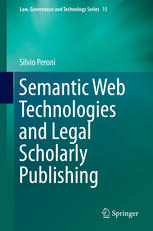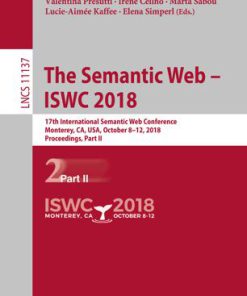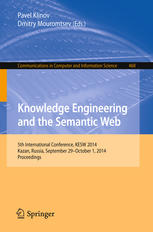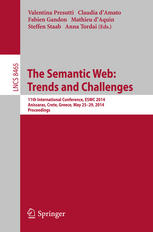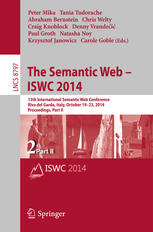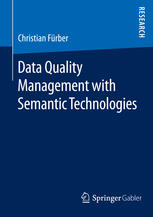Semantic Web Implications for Technologies and Business Practices 1st edition by Michael Workman 9783319166582 3319166581
$50.00 Original price was: $50.00.$25.00Current price is: $25.00.
Semantic Web Implications for Technologies and Business Practices 1st edition by Michael Workman – Ebook PDF Instant Download/Delivery: 9783319166582, 3319166581
Full dowload Semantic Web Implications for Technologies and Business Practices 1st edition after payment
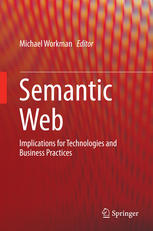
Product details:
• ISBN 10:3319166581
• ISBN 13:9783319166582
• Author:Michael Workman
Semantic Web
Implications for Technologies and Business Practices
This book examines recent developments in semantic systems that can respond to situations and environments and events. The contributors to this book cover how to design, implement and utilize disruptive technologies. The editor discusses the two fundamental sets of disruptive technologies: the development of semantic technologies including description logics, ontologies and agent frameworks; and the development of semantic information rendering and graphical forms of displays of high-density time-sensitive data to improve situational awareness. Beyond practical illustrations of emerging technologies, the editor proposes to utilize an incremental development method called knowledge scaffolding –a proven educational psychology technique for learning a subject matter thoroughly. The goal of this book is to help readers learn about managing information resources, from the ground up and reinforcing the learning as they read on.
Semantic Web Implications for Technologies and Business Practices 1st Table of contents:
Chapter-1
Introduction to This Book
1.1 Resource Description Framework
1.2 Ontology Markup
1.3 Agent Frameworks
1.4 Looking Forward
References
Chapter-2
Semantic Cognition and the Ontological to Epistemic Transformation: Using Technologies to Facilitate
2.1 Introduction
Structure, Structuration, and Agency
Agency and Agent Systems
Goal-Directed Agents
The Problem of Meaning
2.2 Cognition Overview
Memory and Cognition
Information Structure and Semantics
2.3 Visual Perception
Vision and Visual Perception
Visual Memory Processing
2.4 Memory and Attention
Working Memory
Types of Memory
Cognitive Processing
Semantic Relatedness and Cognition
Semantic Priming
Content and Technical Accuracy
2.5 Summary
References
Chapter-3
Using Symbols for Semantic Representations: A Pilot Study of Clinician Opinions of a Web 3.0 Medical
3.1 Introduction
3.2 Theory Foundations and Design Principles
3.3 Method
Participants and Preparations
Instrumentation
Procedures
3.4 Results
3.5 Discussion
References
Chapter-4
Emerging Semantic-Based Applications
4.1 Background
4.2 Semantics Behind Keywords
Semantic Keyword-Based Search: QueryGen
Semantic Data Retrieval: Doctopush
4.3 Semantic Information Extraction: GENIE
4.4 Technologies for Fuzzy Knowledge
Modeling Fuzzy Ontologies with Fuzzy OWL 2
Reasoning with Fuzzy Ontologies Using fuzzyDL
Reasoning with Fuzzy Ontologies Using DeLorean
4.5 Applying Semantic Web Technologies to Mobile Computing
Semantic Location Granules
Semantic Management of LBSs: SHERLOCK
4.6 Discussion
References
Chapter-5
Semantics: Revolutionary Breakthrough or Just Another Way of Doing Things?
5.1 Introduction
The Data World Today: Relational Plus
What Would be Better? And by what Criteria?
What We Mean by Semantic Technology?
Foundational Concepts in Modeling
Importance of Similarity
Importance of Model Theory
Logic and Logic Programming as Reference
RDF, RDFS, and OWL as Semantic Languages
Evaluation of Semantic Web Languages Against Criteria
5.2 How Are Semantic Web Languages Different?
Comparison with and Evaluation of XML
Comparison and Evaluation of Object-Oriented Languages
Relational Revisited: Comparison and Evaluation
Comparison and Evaluation of UML with Notes on MOF, eMOF, ODM, and SMOF
Summary of Representations
5.3 Semantics in Real-World Solutions
Model-Driven Equipment Overhaul: Common Understanding
Data Provenance: Information Availability
Early Manufacturability: Inference
Smart Grid: Interoperability
Data Science: Data Speaks
5.4 Conclusion
References
Chapter-6
Unnatural Language Processing: Characterizing the Challenges in Translating Natural Language Semanti
6.1 Introduction
6.2 Levels of NL Semantics
6.3 Morphological Level
6.4 Lexical Level
6.5 Syntax-Level
6.6 Summary and Value Proposition
References
Chapter-7
The Lexical Bridge: A Methodology for Bridging the Semantic Gaps Between a Natural Language and an O
7.1 Introduction
7.2 Technical Approach: The LB
Lexicalized Ontology Example
LB Components
Building the LB
Potential Applications of the LB
RDF Redundancy Definition
LB Methodology Applied to RDF Redundancy Evaluation
LB Architecture
LB Prototype and Results
7.3 Conclusion and Next Steps
References
Chapter-8
Reliable Semantic Systems for Decision Making: Defining a Business Rules Ontology for a Survey Decis
8.1 Structure of Researched Data
8.2 Applying Semantic Technologies to a Survey Decision Support System
Analysis of Questions and Responses
Analysis of Secondary Data and Business Rules
Requirements and Data Analysis Techniques
Decision Support Systems
Requirements Engineering
Visual Data Analysis
Business Rules Analysis
Semantic Analysis
8.3 Pattern Analysis and Validation Techniques
8.4 Architecture of a Semantic Decision Domain
8.5 Conclusion
References
Chapter-9
University Ontology: A Case Study at Ahlia University
9.1 Introduction
9.2 University Ontology
Building the Ontology
Specification
Property and Relationship
Implementation
Verification
9.3 Case: Ahlia University Ontology
Conclusion
References
Chapter-10
Semantic Enrichment of Event Stream for Semantic Situation Awareness
10.1 Introduction
10.2 Overview on Event Processing
Finite-State Machine
Graph-Based Approaches
Rule-Based Approaches
RETE Algorithm in Event Processing
Storage-Based Event Processing
Data Stream Processing Systems
10.3 Semantic Complex Event Processing
Issues and Challenges
Applications of Knowledge-Based Event Processing
Example Use Case: High-Level Market Monitoring
Approaches for Knowledge-Based Event Processing
Stream Reasoning and Resource Description Framework Processing Systems
10.4 Fusion of Event Stream and Knowledge
Semantic Enrichment
Plan-Based Semantic Enrichment
Planning Multistep Event Enrichment and Detection
10.5 Summary and Discussion
References
Chapter-11
Semantic Web and Business: Reaching a Tipping Point?
11.1 Placing the Web in Context
A Review of Traditional Semantic Technology Application to Business
Historical Understanding of Business Applications Tied to the Semantic Web
Data Annotation
Search
Social Media Analysis
Knowledge Management
Data Integration
Semantic Web Technologies are Not Keeping Up
Trends that Could Tip the Scale
Larger and Larger Shopper Profiles
Omni-channel Marketing
Personalization
Real-Time and Contextual Communication
The Future of Semantic Technologies and Today’s Marketing Challenge
Ontology Extraction
Personal Ontology Development
Personal Ontology Fusion
Reasoning and Simulation for Consumer
Agent-Based Frameworks
11.2 Conclusions
References
People also search for Semantic Web Implications for Technologies and Business Practices 1st:
semantic web implications for technologies
semantic web technologies
semantic web implementations
semantic web in education
semantic web implementations are web applications that
You may also like…
Computers - Computer Science
Reference - Writing
Semantic Web Technologies and Legal Scholarly Publishing 1st Edition Silvio Peroni (Auth.)
Computers - Programming
Computers - Computer Science
Computers - Computer Science
Computers - Computer Science
Computers - Applications & Software





